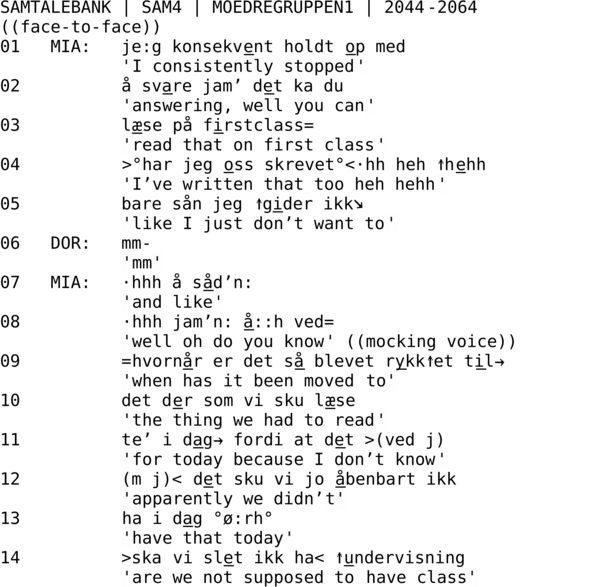Bare + imperative
When the adverb bare (‘just’) comes before a verb in the imperative mode, it is typically used to provide the recipient with a suggested solution/action to a presented problem. The bare construction can signal that the solution is simple or straightforward, while simultaneously indicating that the problem is not as big or complicated as it was presented as.
Typically, when a speaker uses an imperative it’s an indication that they have the authority to direct the recipient to perform the action expressed by the imperative. This authority can have a variety of bases, e.g., access to knowledge or social structures, and is context dependent. This means that the same speaker can claim authority in some situations, and not in other situations.
There is a difference between whether an imperative is used alone (potentially along with an object as in slip bremsen (‘let go of the brake’ or tag opvasken ‘do the dishes’) or along with a modifying word like e.g. bare (‘just’). If the imperative stands alone, it signals that the speaker has very high authority and such constructions are typically used if the requested action has to be performed immediately. By contrast, if the imperative is modified it becomes less relevant whether the action is performed right away, and other factors surrounding the request play a bigger role. If the imperative is modified by, e.g., a preceding bare (‘just’), it’s not necesarilly a wish that the action should happen right away – although it may be so. Rather, focus is placed on the fact that there is a simple solution to the proposed problem. In the following example the four conversation participants are discussing university students and their problems with taking responsibility. M, a student herself, has begun telling a story about how younger students use her as an information source, rather than looking at the university’s online platform FirstClass:


M doesn’t get much response to her story, neither verbally nor with gestures such as nodding.
When the story ends, S responds in lines 18-19 with the imperative construction Bare skriv Det ved jeg ikk (‘Just write I don’t know’), and then elaborates on this proposed solution by comparing the students to M’s children.
M quickly accepts this proposal with Fint (‘Fine’) in line 22 and Helt ærlig (‘Yes honestly’) in lines 28-29.
The solution is presented as being easy with the word bare, and this is evidenced by the fact that S didn’t join in with responses throughout M’s story. It shows that the problem conveyed in the story was perceived as being less challenging than how M construed it.
Sources and further reading:
Heinemann, T. & Steensig, J. (2017) is a thorough review of the expression bare + imperative along with two other imperative constructions.
Sorjonen, M-L., Raevaara, L. & Couper-Kuhlen, E. (2017) is a book about imperatives and their function in conversations in different languages.
Relevant entries
The Building Blocks of Talk-in-interaction > Word classes/Parts of speech > Verbs
The Building Blocks of Talk-in-interaction > Word classes/Parts of speech > Adverbs
